Henning Kure's Tarzan Chronology in Edgar Rice Burroughs News Dateline, #49/50 was very enjoyable, but there were various points of contention. As an author of Tarzan chronology articles for over ten years, and a chronology researcher before that, I felt the need to offer some alternatives. It is quite obvious to me that Mr. Kure is framing his information around Philip Jose Farmer's Tarzan Alive, published in 1972, and Alan Hanson's Tarzan Chrono-Log, published in 1990. Being very knowledgeable about all the Tarzan chronology articles, I could not help but wonder what steered Mr. Kure toward the 1872 date for Tarzan's birth, rather than the 1888 date given in Tarzan Of The Apes. It would appear from the way Kure wrote his article, that he has had access to many of the chronology articles written in the Edgar Rice Burroughs fan press.
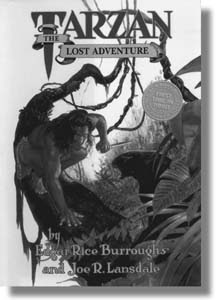 |
| Tarzan The Lost Adventure |
At the 1989 ECOF Gathering in Tarzana, my conversation with Tom Yeates included discussions about the Tarzan chronology. Tom stated that he felt Tarzan was born in 1872. We talked over most of the major stumbling blocks facing a Tarzan chronology, which we both agreed upon, but many of the smaller details were overlooked because of time. When reading Kure's chronology, I wondered just how much of Tom Yeates' influence is there.
Kure's chronology is off to a good start with the 1872 birth of Tarzan. My research and articles over the years have supported the May 1872 Greystoke's sailing date, as opposed to the May1888 Greystoke's sailing date given by Edgar Rice Burroughs in Tarzan Of The Apes. Burroughs deliberately used a fictitious date to protect Lord Greystoke from curiosity seekers, by providing a false trail so his identity would not be revealed. Reading Kure's chronology, there were several points for which my research has provided a different answer.
The first unacceptable affirmation of theory is Kure's statement regarding the 'Korak Time Discrepancy'. "One theory - magnificently advocated by Philip Jose Farmer in Tarzan Alive! - is that Korak is Tarzan's "adoptive son." I can not understand why Cure finds this so magnificent because The Return Of Tarzan through Tarzan And The Ant Men describes Korak as being Tarzan's biological son.
 |
| Tarzan Alive |
Farmer shows the events of The Son Of Tarzan that occurred from May 1913 through May 1914. That is a passage of one year. If one reads the description of Jack Clayton at the beginning of the novel and his description at the end, it is easily evident that more than one year has passed during the adventure. Farmer's suave argument also does not adequately account for the internal chronological problems that occur in Jungle Tales Of Tarzan using a birth date of 1888.
 |
| J. Allen St. John |
Kure continues, "Besides, this theory is developed by fans who try to make Tarzan fit into a specific point in the Sherlock Holmes chronology." A Tarzan chronology intertwines with a Sherlock Holmes chronology much better by using an 1872 sailing date rather than an 1888 sailing date. Using 1888 Holmes would be returning after many years of retirement. Support for this statement can be found in the published investigation on the life and times of John And Alice Clayton in ERB-APA #19 and of Black Michael in Tarzine #44.
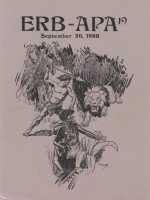 |
| ERB-APA #19 |
Both Kure and I agree that Alan Hanson's Tarzan Chrono-Log is diminished by the omission of The Son Of Tarzan. My article in ERB-APA #40 expounds on several reasons why The Son Of Tarzan needs to be included in a Tarzan chronology, and how the story strengthens a Greystoke chronology as a whole.
 |
| ERB-APA The First Decade |
Tarzan's horoscope is then brought into the discussion by Kure. This is one approach not utilized in my chronology because it is based entirely on information provided by Edgar Rice Burroughs. Farmer, had a Tarzan horoscope created and there has been at least one other horoscope published in the fan press. Edgar Rice Burroughs never referred to horoscopes in his novels. Therefore, other than the personal edification of those who believe in them, they have no real relevance.
 |
| Tarzan The Lost Adventure |
What is amazing about Kure's theories is that he concludes Tarzan's birth date is Sunday, September 29, 1872, at 3:30 pm local time solely on the information in the horoscope. Not once does Kure refer to any information provided by Burroughs?
 |
| Tarzan The Lost Adventure |
A chronology based on the events as they occurred and are described by Burroughs shows that Tarzan could have been born in the last few days of August or the first few days of September. Because September 1st is Edgar Rice Burroughs' birthday, and it was the author's constant habit to introduce true life dates from his family genealogy into his stories, I feel the ape-man was born on September 1, 1872.
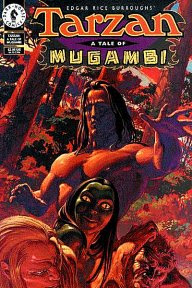 |
| Tarzan The Lost Adventure |
From this point on, it is all too plain to see that Kure has maintained Farmer's Tarzan Alive and Hanson's Tarzan Chrono-Log and revised them to agree with an 1872 chronology. This has resulted in Kure's failure to produce an accurate Tarzan chronology. You simply can not form an 1872 chronology by following Farmer's and Hanson's information. What one needs to do is adhere to Burroughs' provided information and then add Farmer's and Hanson's research.
 |
| Tarzan Alive |
My article in ERB-APA #40 explains why the beginnings of Hanson's chronology fell short. Many researchers of the past have pointed out the weaknesses in Farmer's chronology. When Kure depends on those two chronologies, he repeats the same errors of the past and strays from the information Burroughs presented.
 |
| ERB-APA #40 |
One of the first stumbling blocks to a Tarzan chronology is figuring out when and where the ape-man was born. Kure is quick to point out that Tarzan could not have been born in Angola as described by Burroughs, but was instead born in Gabon. Kure continues to discuss the problems of travel time to Opar from the jungle lord's various homes. All this is classic Tarzan Alive.
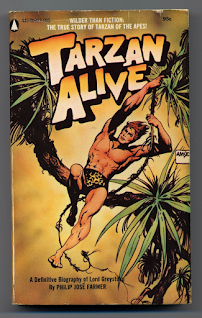 |
| Tarzan Alive |
It should be quite obvious that Edgar Rice Burroughs, the narrator, as opposed to Edgar Rice Burroughs, the author, is not going to reveal any truths about these locations and we should expect that. By Burroughs' jungle and mountain descriptions, it is very debatable rather Tarzan was born in Angola or not. But...trying to map Tarzan's Africa is just as extensive of a project as doing a Tarzan chronology. The two subjects are of such magnitude that it is very difficult and very complex to explain simultaneously.
 |
| Tarzan The Lost Adventure |
To keep things simple and chronology-oriented, I have chosen to follow Burroughs' provided information. This provides for a chronology consistent with the author's novels. Burroughs implied in several passages that the jungle lord was born in Angola, and that is what is used in my chronology. For more information on this subject see Tarzine #55 and ERB-APA #37. In Tarzan Alive, Farmer tried to present the ape-man based on facts, but when he arrived at the end - it was not the same story that Burroughs told. Assuming that Tarzan was born somewhere other than Angola is debatable, but changing the location deviates the entire story as presented by Burroughs.
 |
| ERB-APA #37 |
It is quite interesting that Kure chose to follow the ape-man's quote when he was talking to the
Countess de Coude. The jungle lord told the Countess, "The only mother I ever knew was a ferocious she-ape. Until I was fifteen I had never seen a human being. I was twenty before I saw a white man. A little more than a year ago I was a naked beast of prey in an African jungle." ERB-The Return Of Tarzan.
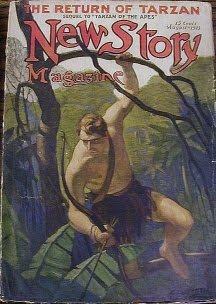 |
| The Return Of Tarzan |
As all Greystoke chronology fans know, in Tarzan Of The Apes the author provided us with entirely different information. Just before Mbonga's tribe wanders into Tarzan's jungle, it is stated, "Thus at eighteen, we find him, an English lording, who could read and write his native language. Never had he seen a human being other than himself, for the little area traversed by his tribe was watered by no great river to bring down the savage natives of the interior."
 |
| Tarzan Of The Apes |
Now, what does a chronologist do? We have two sets of provided information, both presented by Burroughs, yet they contradict each other. Which one is right? The only real way to be certain is to compose a chronology using both sets of data. The chronology which remains most accurate with the author's other descriptions provided elsewhere would be the correct information.
 |
| Tarzan Of The Apes |
The biggest reason I can not agree with Kure's theory is that his chronology goes by the passage that Tarzan was fifteen when he saw a human being. This timeline change affects the dating of the lunar eclipse mentioned in the closing chapter of Jungle Tales Of Tarzan. Kure believes the lunar eclipse occurred on November 16, 1891, at 1:20 AM. This would make the ape-man nineteen years, and one and a half months old when these events occur. Just before the lunar eclipse takes place, Teeka is kidnapped by Toog. Naturally, Taug and the ape-man went to her rescue. It is here that Burroughs informs us twice, that Tarzan is twenty years old when these events occur in 'Battle For Teeka'.
 |
| Jungle Tales Of Tarzan |
"On the floor lay the skeleton of a man - all that remained of the former Lord Greystoke - lay as it had fallen some twenty years before when Kerchak, the great ape, had thrown it, lifeless, there." ERB-Jungle Tales Of Tarzan.
 |
| Jungle Tales Of Tarzan |
"He did not know that the dead father of Tarzan of the Apes, reaching back out of the past across a span of twenty years had saved his son's life." ERB-Jungle Tales Of Tarzan.
 |
| Jungle Tales Of Tarzan |
Another disappointing factor that swayed me from the idea that the ape-man was fifteen at the end of Jungle Tales Of Tarzan is the unexplained long gap of time until the story continues in Tarzan Of The Apes.
 |
| ERB-APA #14 |
At the end of his Tarzan Of The Apes discussion, Kure tells us, "The cars described in the novel are contemporary with the writing - but they weren't invented at the time of the events. They were, in fact, horse carriages." A few years back, the late great John F. Roy and I had a debate on this very subject. Mr. Roy's information was presented in ERB-APA #14 and #15. John F. Roy more or less came to the same conclusion as Kure. Those cars were impossible in 1893.
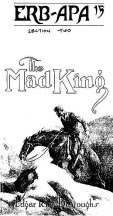 |
| ERB-APA #15 |
My contribution to ERB-APA #17 presented a very different story. Gasoline-powered cars were definitely not possible in 1893, but the article went on to show that electric and steam cars were very possible. In 1893 Tarzan's French car was probably a Panhard or a Peugeot. Very improbable - yes, impossible - no!
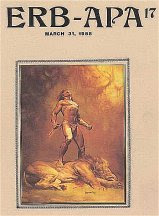 |
| ERB-APA #17 |
Although early electric and steam cars could be included in an 1872 chronology, they would not be as modern as Robert Canler's in Wisconsin as described in Tarzan Of The Apes. "He did not press the matter further, but if ever a man had murder in his heart it was William Cecil Clayton, Lord Greystoke when a week later, Robert Canler drew up before the farmhouse in his purring six cylinder." ERB-Tarzan Of The Apes. The first car with a six-cylinder, according to the book, History Of Cars, was a Napier. The Napier was produced in London and Boston from 1906 to 1909.
 |
| 1908 Napier |
According to Kure, Tarzan Of The Apes ends sometime in November 1893. Burroughs' presented facts do not support that date, however. When Robert Canler speaks to Professor Porter about marrying his daughter, just before the Porters leave Baltimore for northern Wisconsin, the statement is made by Jane. "I want you to be sure, papa, to indicate all that you can do without until fall." ERB-Tarzan Of The Apes.
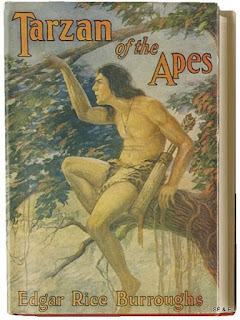 |
| J. Allen St. John |
Jane's description plainly indicates that it is summer and that the Porters are returning to Baltimore in the fall. In North America, fall officially lasts from September 23rd to December 22nd. Therefore, we know this conversation had to occur before, or after, the fall of 1893.
 |
| Tarzan Of The Apes |
From the point of Canler and Professor Porter's conversation about Jane's marriage, until the end of Tarzan Of The Apes, it is less than a month's passage of time. There is no way these events went into November.
 |
| Tarzan Of The Apes |
Still, another problem in Tarzan Of The Apes is Jane's letter to Hazel Strong written on the west coast of Africa dated February 3 (?), 1909. The 1909 date adheres to an 1888 chronology. In an 1872 chronology, the date on Jane's letter has to be changed to February 3 (?), 1892 which is sixteen years earlier.
 |
| Tarzan Of The Apes |
In The Return Of Tarzan, there are two passages that do not conform to an 1872 chronology. Kure pointed out the first, 'skyscrapers' in New York. During her New York City visit, the Countess de Coude says, "I was but recalling with admiration those stupendous skyscrapers, as they call them in New York." ERB-The Return Of Tarzan, chapter 1.
William LeBaron Jenny designed the first skyscraper, the Home Insurance Building, in Chicago. It was built with an iron frame in 1884 and torn down in 1931. The oldest skyscraper in New York City is the twenty-one-story Flatiron Building on 23rd Street where Broadway crosses Fifth Avenue. Completed in 1902, it is in the shape of a triangle.
Chapter 3 of The Return Of Tarzan states that the jungle lord saw Olga de Coude approaching in a limousine. The word 'limousine' did not come into existence until 1902. It was a newly-coined French word meaning 'of Limoges'. We know the jungle lord is twenty-two years old when The Return Of Tarzan begins because Burroughs tells us, "Tarzan's thoughts drifted from the past to the future. He tried to look forward with pleasurable sensations to his return to the jungle of his birth and boyhood; the cruel, fierce jungle in which he had spent twenty of his twenty-two years." Burroughs did not mention the brand of Olga de Coude's limousine, but the picture below is a sample of a 1910 limousine.
 |
| 1910 Hotchkiss Limousine |
Using Kure's dates, Tarzan turns twenty-two on September 29, 1894. Yet Kure shows The Return Of Tarzan beginning in February 1894. This would make the ape-man only twenty-one, and not twenty-two, as stated by Burroughs.
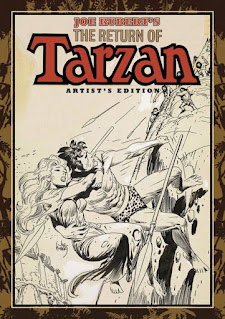 |
| The Return Of Tarzan |
In chapter 1 of The Beasts Of Tarzan, Burroughs relates some more auto descriptions that can not be accepted in an 1872 chronology. Within the context of the first chapter, automobiles are mentioned twice.
 |
| The Beasts Of Tarzan |
- "As Tarzan leaped from the roadster that had met him at the station and ran up the steps to his London house he was met by a dry-eyed but almost frantic woman." ERB-The Beasts Of Tarzan. Burroughs does not reveal to us what brand of roadster Tarzan rode in but the following is a visual sample of 1910 roadsters.
 |
| 1910 Stoddard-Dayton Roadster |
2. "The baby's nurse had been wheeling him in the sunshine on the walk before the house when a closed taxicab drew up at the corner of the street. The woman had paid but passing attention to the vehicle, merely noting that it had discharged no passenger, but stood on the curb with motor running as though waiting for a fare from the residence before which it had stopped." ERB-The Beasts Of Tarzan. This is one example of a 1910 taxi, but it does not have running boards as described by Burroughs.
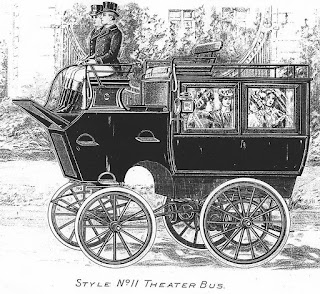 |
| 1910 Woodsbus |
"Just before she reached the vehicle, Carl leaped in beside his confederate, slamming the door behind him. At the same time, the chauffeur attempted to start the machine, but it was evident that something had gone wrong, as though the gears refused to mesh, and the delay caused by this, while he pushed the lever into reverse and backed the car a few inches before again attempting to go ahead, gave the nurse time to reach the side of the taxicab.
Leaping to the running board, she had attempted to snatch the baby from the arm of the stranger, and here, screaming and fighting, she had clung to her position even after the taxicab had got underway; nor was it until the machine had passed the Greystoke residence at good speed that Carl, with a heavy blow to her face, had succeeded in knocking her to the pavement." ERB-The Beasts Of Tarzan. Around 1907, motorized Taxi-cabs are legally recognized for the first time in London.
Kure reminds us The Encyclopedia Americana informs the researcher that in 1905 French cars came out with side doors. This being the case - how was it possible - that a closed taxicab was used in the kidnapping of Jack Clayton in the mid-1890s?
All the above information has shown a mere six cases where Burroughs provided descriptions that could not be accepted into an 1872 chronology. A quick review of these are;
- The Greystoke's set sail in May 1888. ERB-Tarzan Of The Apes.
- Jane's letter is dated February 3 (?), 1909. ERB-Tarzan Of The Apes.
- Robert Canler's car was a six-cylinder. ERB-Tarzan Of The Apes.
- Countess de Coude saw 'skyscrapers' in New York City and used the word 'limousine'. ERB-The Return Of Tarzan.
- Tarzan pulled up in front of his London house in a 'roadster'. ERB-The Beasts Of Tarzan.
- A motorized closed taxicab with doors and running boards. ERB-The Beasts Of Tarzan.
Now with an open mind, just for discussion's sake, let us make some minor modifications and look at these six again.
- The Greystoke's set sail in May 1872.
- Jane's letter is dated February 3 (?), 1892.
- Robert Canler's auto was not a six-cylinder, but instead an electric or steam car.
- Countess de Coude saw numerous huge buildings in New York City.
- Tarzan pulled up in front of his London house driving a car.
- Jack Clayton's kidnappers used a closed taxi that was horse-drawn.
If the second dates were accepted, how much would Carter's and Burroughs' presented storyline change? The story is altered by sixteen years, and the other five are mere modernization descriptions. The only way the Edgar Rice Burroughs publishing team could continue writing the Greystoke Chronicles was that Carter and Burroughs took pains to protect the English family's true identity.
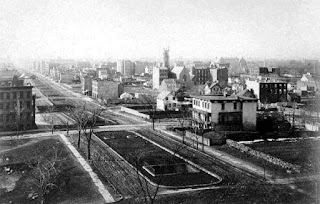 |
| 1893 New York City |
To accomplish this the writing team of Carter and Burroughs did not use the prominent family's real names, nor the actual dates of the events. The Fuwalda and the illustrious English family name would have been easily traced, and the Greystoke's revealed.
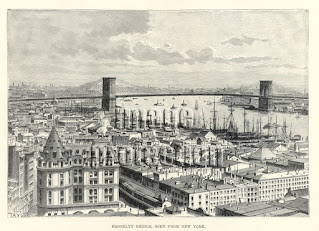 |
| 1893 Brooklyn Bridge, New York City |
It is obvious that the Edgar Rice Burroughs publishing team has moved events forward by sixteen years. Therefore, when Carter and Burroughs advanced the Greystoke's sailing date they had to alter some descriptions to coincide with the modernized times. That is why modern automobiles are described, 'skyscrapers' are mentioned in New York City, and modern words like 'limousine' and 'six-cylinder' are used.
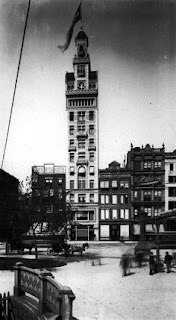 |
| 1893 New York City, Decker Building |
These six little changes are background descriptions. They play no real part in the story outside of giving descriptions of their time era. Changing these descriptions to sixteen years earlier only changes the time era, but it remains true to the storyline as presented by the author.
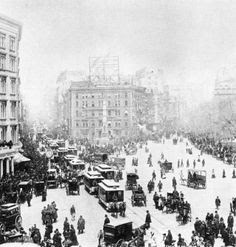 |
| 1893 NY City, Madison Squire |
Using Tarzan Of The Apes provided 1888 sailing date allows the reader to accept all the modernization descriptions, but the lunar eclipse in Jungle Tales Of Tarzan does not occur.Korak is not Tarzan and Jane's born son. The Son Of Tarzan is penned years before the ending events take place, and the list goes on and on. These are major, not minor, alterations that change the presented storyline greatly.
 |
| Tarzan Of The Apes |
It is at this point in Kure's 1872 chronology research that drastically departs from my own. According to Kure, The Son Of Tarzan starts ten years after The Beasts Of Tarzan, in September 1907. Kure also states The Son Of Tarzan took six years to complete, ending in October 1913. During that same time, according to Kure, the events of Tarzan And The Jewels Of Opar and The Eternal Lover occur. For The Eternal Lover to be congruous with the chronology, Kure says, "Burroughs was still very careful about his false chronology, and included a scene with Jack, as a baby, happening sixteen years earlier."
 |
| Burroughs Bulletin |
The problem with this theory is that Kure goes against Burroughs' provided information. When a chronologist deviates from Burroughs' provided information without facts, you can not expect your Greystoke chronology to remain consistent with the storyline provided by the Tarzan series. In an 1872 chronology, research indicates that Dackie (Jackie) is Tarzan's grandson, Korak's and Meriem's son.
 |
| Tarzan Of The Apes |
We have covered a large amount of information so let's quickly do a review chart of Henning Kure's chronology dates provided in ERB News Dateline #49/50.
- May 1872 through May 1888: 1st part of Tarzan Of The Apes
- May 1888: Jungle Tales Of Tarzan begins
- November 16, 1892: lunar eclipse & Jungle Tales Of Tarzan ends
- November 1891: through November 1893: 2nd part of Tarzan Of The Apes
- January 1894 through March 1895: The Return Of Tarzan
- April 1897 through August 1897: The Beasts Of Tarzan
- September 1907: The Son Of Tarzan begins
- 1909 or 1910 or 1911: Tarzan & The Jewels Of Opar
- Early Spring 1913: The Eternal Lover
- October 1913: The Son Of Tarzan ends
With all due respect to Henning Cure, here is an alternative 1872 chronology, provided by me, which I feel sticks much closer to the presented storyline of the Tarzan series.
- 1240 through 1264: The Outlaw Of Torn
- May 1872 to October 1890: 1st part of Tarzan Of The Apes
- November 1890: Jungle Tales Of Tarzan begins
- November 4, 1892: lunar eclipse & Jungle Tales Of Tarzan ends
- November 5, 1892, through August 22, 1893: 2nd part of Tarzan Of The Apes
- 1894 through 1895: The Return Of Tarzan
- 1895: Korak was born offstage
- April through August 1896: The Beasts Of Tarzan
- September 1906 through 1912: The Son Of Tarzan
- 1912: Tarzan & The Jewels Of Opar
- October through November 1912: part 1 The Mad King
- Early Spring 1913: The Eternal Lover
- August to early September 1914: part 2 The Mad King
- September 1914 through August 1916: Tarzan The Untamed
- May 1915: The Man Eater
There are several critical differences between the two presented chronologies. Kure's early chronology theories are based on the assumption that the ape boy was fifteen years old when he saw his first man as reported in The Return Of Tarzan. The lunar eclipse occurred on November 16, 1891. This makes the ape-man nineteen years old when the lunar eclipse occurs, not twenty as twice indicated in Tarzan Of The Apes. From the point of the lunar eclipse until the re-entering of Tarzan Of The Apes, there is an unexplained long time break.
 |
| The Return Of Tarzan |
Kure's 1872 chronology proceeds to establish that there were no automobiles although Burroughs indicates that there were. In an 1872 chronology, the autos would have to either be electric or steam, but autos are very much a possibility in Tarzan Of The Apes.
 |
| Tarzan Of The Apes |
Kure's 1872 chronology continues to state that the events of Tarzan & The Jewels Of Opar and The Eternal Lover occur during the same time as the events of The Son Of Tarzan. However, for this to transpire Kure says Burroughs is describing past events and that Dackie (Jackie) is part of a false chronology in The Eternal Lover. This compression theory is a practice borrowed from the 1888 chronologist. In an 1872 chronology compression of events is not needed.
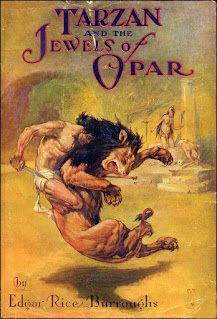 |
| Tarzan And The Jewels Of Opar |
In my alternative 1872 chronology, Tarzan sees his first man at the age of eighteen as described in Tarzan Of The Apes. The lunar eclipse occurs on November 4, 1892, which makes the ape-man twenty years old as described twice by Burroughs.
 |
| Tarzan Of The Apes |
In my alternative, 1872 chronology automobiles were diffidently a part of Tarzan's life. Instead of the modern cars described by Burroughs, they would have to be replaced with electric or steam autos.
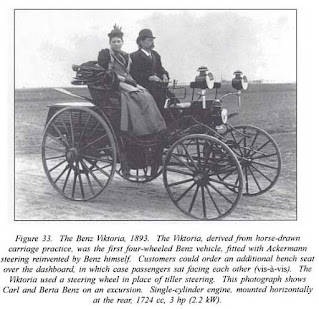 |
| 1893 Benz Victoria |
The alternative 1872 chronology establishes that the events of The Son Of Tarzan, The Jewels Of Opar, and The Eternal Lover return to an undistorted proper timeline, and the events do not have to be calibrated.
 |
| 1893 Peugeot Type 8 |
Overall, Kure did a first-rate job presenting an alternative theory not eliminating The Son Of Tarzan, or Korak not being Tarzan's biological son. In my personal opinion, I feel Kure relied more on adjusting the works of Farmer and Hanson than on the writings of Edgar Rice Burroughs. Farmer and Hanson influenced Kure into thinking that it is necessary to compress Tarzan & The Jewels Of Opar and The Eternal Lover into The Son Of Tarzan, which is not required in an 1872 chronology.
 |
| A Chronolog Of Edgar Rice Burroughs Tarzan Series |
In fact, by changing the flow of events from 1888 and shifting them sixteen years to 1872, the positioning of The Eternal Lover would not change from that of the 1888 chronology. This is a point that Kure overlooked because of Farmer and Hanson's heavy influence.
 |
| Tarzan Alive |
What makes The Eternal Lover so unique in an 1872 chronology is that it is the first Tarzan adventure to be pinned in its correct time period, early spring 1913. The ape man's adventures transpiring in Tarzan Of The Apes through Tarzan & The Jewels Of Opar were pinned in a manner to make readers believe the events actually occurred sixteen years subsequent to their actual happening.
 |
| Eternal Savage |
Another reason that Kure's research was stagnated by Farmer and Hanson's is that his 1872 chronology does not interpret the fact that Edgar Rice Burroughs, the author from Illinois, and Edgar Rice Burroughs, the narrator from Virginia, are two different people. This distinction is very important to remain true to the story representation.
 |
| A Chronolog Of Edgar Rice Burroughs Tarzan Series |
John F. Roy, and I, base our chronologies on the two Edgar Rice Burroughs'. Farmer, Hanson, and Kure write as if there is only one Edgar Rice Burroughs. For more on the two Edgar Rice Burroughs' see Roy's articles in ERB-DOM #11 and #25 or my articles in ERB-APA #8 and Tarzine #34.
ABOUT THE AUTHOR
James Michael Moody is a lifelong fan and collector of Edger Rice Burroughs. Over the past forty-five years, Moody has contributed over two hundred articles to various ERB-related fanzines. He also manages an unauthorized Tarzan blog titled Greystoke Chronologist: James Michael Moody. There, the researcher chronologies the Tarzan books starting in May 1872 (known as the pushback theory) instead of the more accepted date, May 1888.
James Michael Moody also authorizes the action-packed Sci-Fi fantasy adventure Unium series. Pioneers On Unium, published December 31, 2019, Exiled On Unium, published August 25, 2022, and Swordsman On Unium, published on July 15, 2024.
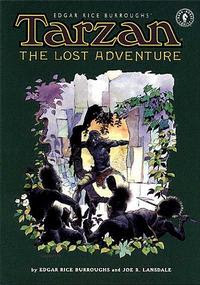


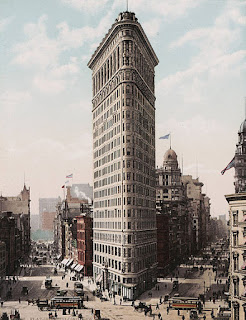



No comments:
Post a Comment